 Weird Stuff
Weird Stuff  Weird Stuff
Weird Stuff  Mysteries
Mysteries 10 Tragic Disappearances and Deaths in Joshua Tree National Park
 History
History 10 Ways Childhood Really Sucked in the Old West
 Music
Music 10 Name Origins of Famous Bands from the 1990s
 Religion
Religion 10 Biggest Turnarounds by the Catholic Church
 Weird Stuff
Weird Stuff 10 Unbelievable Times Laws Had Unintended Consequences
 Humans
Humans Ten Historic Women Who Deserve Way More Credit Than They Got
 Movies and TV
Movies and TV 10 Films That Spawned Major Lawsuits
 History
History Ten Times Towns Were Wiped Off the Face of the Earth
 Creepy
Creepy 10 of the Most Disturbingly Haunted Public Houses in the UK
 Weird Stuff
Weird Stuff 10 Niche Subcultures That Are More Popular Than You Might Think
 Mysteries
Mysteries 10 Tragic Disappearances and Deaths in Joshua Tree National Park
 History
History 10 Ways Childhood Really Sucked in the Old West
Who's Behind Listverse?

Jamie Frater
Head Editor
Jamie founded Listverse due to an insatiable desire to share fascinating, obscure, and bizarre facts. He has been a guest speaker on numerous national radio and television stations and is a five time published author.
More About Us Music
Music 10 Name Origins of Famous Bands from the 1990s
 Religion
Religion 10 Biggest Turnarounds by the Catholic Church
 Weird Stuff
Weird Stuff 10 Unbelievable Times Laws Had Unintended Consequences
 Humans
Humans Ten Historic Women Who Deserve Way More Credit Than They Got
 Movies and TV
Movies and TV 10 Films That Spawned Major Lawsuits
 History
History Ten Times Towns Were Wiped Off the Face of the Earth
 Creepy
Creepy 10 of the Most Disturbingly Haunted Public Houses in the UK
Top 10 Famously Bizarre Robberies
Robbery is a crime which has been perpetuated throughout history in an array of high-profile instances. Some examples include the famous Brinks Mat Robbery of 1983, or the Lufthansa Heist which took place in 1978. Many of such memorable incidents have been romanticized in Hollywood movies and TV documentaries. The thefts which are most remembered are often shrouded in mystery, or have a bizarre twist making them all the more interesting to read about in a newspaper. This list documents some of those crimes which will continue to be remembered throughout history, for the extraordinary circumstances of their occurrence.
Although this robbery is far from what one might describe as “high-profile,” its strangeness and hilarity warrant it a place on this list. Earlier this year three young British men got themselves drunk and broke into SeaWorld on the Gold Coast in Australia. They proceeded to climb over high security fences before swimming with dolphins in the aquarium. It was then they disturbed Dirk the sleeping Penguin and snatched him before leaving. Apparently the next day the three drunken imbeciles discovered Dirk in their apartment, in a scene reminiscent of “The Hangover.” They dumped their unwanted loot, in this case a young fairy penguin, at a lagoon where he was later found hungry and traumatized by the ordeal. The three were later identified and prosecuted for their prank, and all faced large fines. Rhys Jones, one of the three men, said: “Still a bit fuzzy about the whole thing but on behalf of all three of us we are very sorry and it was just a prank that went too far.” Dirk made a full recovery and is back with his fellow penguins at SeaWorld.
Bizarre Factor: The video footage shown above was actually used in court by the three thieves, who wanted to prove that they didn’t mean to harm Dirk.

In 1303, Richard Pudlicott was a peasant wool-merchant living in London. Down on his luck and indebted heavily to the local Jewish community, Pudlicott decided to plan a robbery of King Edward I “Longshank’s” (pictured above) treasury at Westminster Abbey. He recruited many high-ranking Church officials to help him with security issues, and made promises of large bribes once the deed was done. In the dark winter nights of 1303, Richard spent his time picking away with various tools on the outside of Westminster Abbey. Months before his robbery attempt, Richard had sown hempseed outside the building, so that the fully grown plants would hide the large gash in the stonework. After weeks and weeks of chiseling away at the masonry, Richard finally found himself in a room filled with baskets and chests loaded with jewels, coins and gold florins from Florence. He remained hidden inside the chamber for two whole days, before escaping with as much as he could carry. The amount stolen is thought to have been around £100,000, more than a year’s tax revenue for the entire kingdom of England.
The King, who was at the time fighting in Scotland, was alerted to the theft when crown officials discovered a large quantity of gold florins in a pawn shop in London. In the years that followed, hundreds of citizens around London were arrested and questioned, including Richard, though he was the only one who proudly confessed to the crime. In order to save his friends in the clergy from execution, he gave a false confession that he was the only one involved in the planning of the heist. After his hanging in 1305, he was flayed and his skin was nailed to the door of Westminster Abbey as a warning to potential imitators. Eventually the King recovered almost all of the stolen loot through inspection of pawn shops by crown officials.
Bizarre Factor: In the months following the robbery, samples of the loot began turning up in the nets of fishermen, who pulled the priceless artifacts from the bottom of the Thames River.
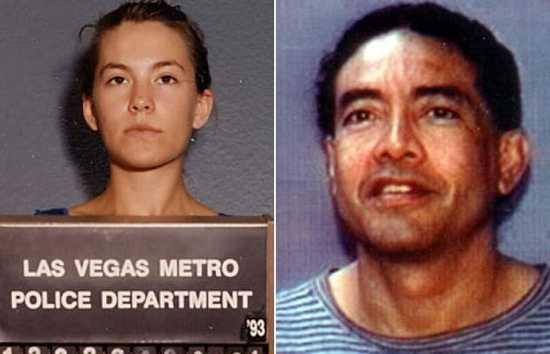
In 1969 a man named Roberto Solis shot a sixty-one year-old security guard in the back, during an armored car robbery in San Francisco. The man died, and Solis was imprisoned for seventeen years until his parole in 1992. While in Folsom prison he wrote poetry under the alias of Pancho Aguila. Despite his incredibly long sentence, he immediately began planning a massive heist upon his release. He seduced twenty year-old Heather Tallchief and convinced her to participate in the robbery. The pair moved to Mexico to formulate their plan; Heather would get a job at a security company, making deliveries to and from the Circus Circus Hotel and Casino in Las Vegas. When driving en-route to the casino, Heather would have a two-minute window of opportunity when her co-workers were absent, and she would be left alone with the van and $2.5million. During this period she would drive the Loomis armored truck to a rented warehouse a few miles from her current location, where Solis would be waiting for her.
On October 1st 1993 the pair executed the plan and it worked without a hitch. Solis and Tallchief proceeded to board a jet later in the day, disguised as elderly passengers. They flew to Denver, and then on to Miami with the $2.5million safely tucked away. The couple remained on the run for years and had a child together, until Solis decided to take off with the larger share of the loot. He left Heather Tallchief sleeping with only $1,000 and a child. In 2005 she turned herself in and is now in jail, but sixty-six year-old Solis is still on the run with the loot.
Bizarre Factor: When asked about a motive for her crime, Heather Tallchief claimed that she had been hypnotized by the murderer, and also that he used “sex magic” to convince her to participate in the heist.
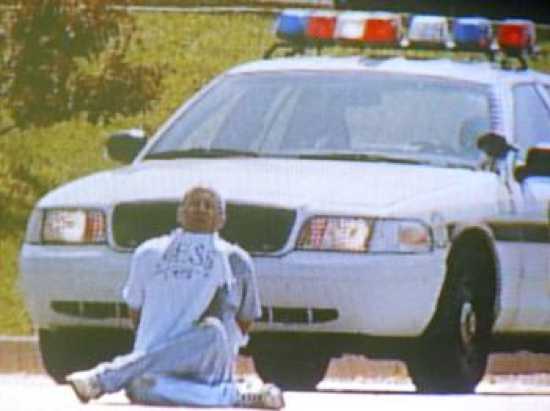
In 2003 Brian Wells, a pizza delivery man, received a call to deliver a pizza to an address which later proved to be fake. When he arrived at the location, two men forced him at gunpoint to put on a large metal collar with a time-bomb attached. They then handed him a note with instructions to rob a bank and complete various other tasks, including delivering the cash takings at a specified location. He was told that if he completed each task within a specified time-limit, the bomb would not explode, however investigators later found that the bomb was rigged to explode regardless of whether he completed the tasks. This was presumably to decrease the number of witnesses against the conspirators.
Soon after having the collar forced upon him, Wells robbed a bank with a homemade shotgun which had been provided for him. He demanded $250,000 but left with less than £10,000, and was apprehended by police outside the bank. While being threatened by police he begged them to call the bomb squad, but they were sluggish in their attempts to do so. Eventually a bomb squad was called in by the police half an hour after the robbery, but they arrived three minutes too late. At 3:18pm the bomb detonated around Wells’ neck blowing a massive hole through his chest. He died at the scene and footage of the explosion was broadcast live on television. Two of the conspirators were charged and convicted in 2007; Kenneth Barnes and Marjorie Deihl-Armstrong were sentenced to forty-five years and thirty years behind bars respectively. They both claimed upon arrest that Wells was conspiring with them to rob the bank, and that he assumed the bomb would be a fake.
Bizarre Factor: The apparent motivation of the crime was that Kenneth Barnes needed money to organize the murder of Diehl-Armstrong’s father. This would secure a massive inheritance for the pair, which would make them millionaires.

In the 17th Century, Colonel Thomas Blood (pictured above) was famous for his trickery and devious behavior. He had already changed sides during the famous Wars of the Three Kingdoms, and had exhibited radical behavior that was deemed treasonous by some contemporaries. In 1671 however, he attempted the most audacious and anti-royalist stunt of his career: the theft of the Crown Jewels of King Charles II. The robbery was planned meticulously by Blood and carried out by him and several accomplices. Firstly, he visited the Tower of London disguised as a parson (a priest of an independent church) accompanied by another female conspirator who posed as his wife. The pair managed to befriend the seventy-seven year-old keeper of the jewels, Talbot Edwards, and his family, and returned to the tower to visit them regularly in the weeks prior to the robbery.
Eventually Colonel Blood persuaded Edwards to show him and some of his alleged family (three other male accomplices) the jewels in private. The men carried an arsenal of hidden weapons, including pistols and rapiers. As soon as they were granted access to the jewels Talbot Edwards was struck with a mallet by Blood, and then bound and gagged before being stabbed as he continued to struggle and shout. Blood then used tools to remove the metal grille which safeguarded the Crown Jewels, and the men escaped the building with their loot. The Royal Sceptre was cut in two by the thieves before they departed, because it wouldn’t fit in their bag, and St. Edward’s Crown was flattened out with a mallet by Blood for the same purpose. The robbers didn’t get far after leaving the building, as the alarm had been raised by Talbot Edward’s shouts of treason. Blood was captured along with his conspirators and brought before the king, who was impressed by Blood’s bold attempt. He not only spared his life, but granted him lands in Ireland, perhaps fearing a reprisal attack against him should he execute the Colonel. Blood’s accomplices were also spared and the Crown Jewels were recovered, though the Royal Sceptre was damaged beyond repair.
Bizarre Factor: Such was Blood’s reputation for deviousness, that upon his death in 1680 his body was exhumed. This was to prove he didn’t fake his own death to avoid taxes.
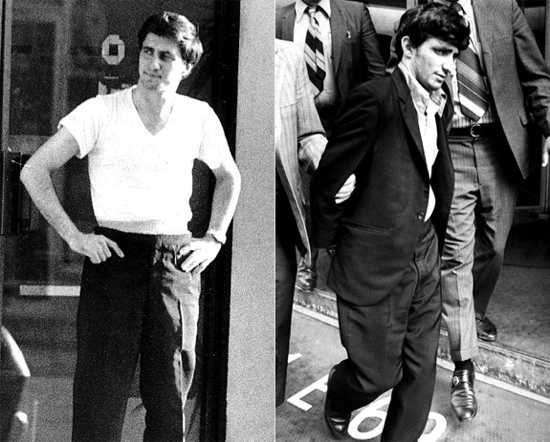
On August 22nd, 1972, a branch of the Chase Manhattan Bank in Brooklyn, New York was held up by two homosexuals wielding rifles. These men included twenty-seven year-old John Wojtowicz and eighteen year-old Salvatore Naturile. Another man had also been involved in the robbery, but he lost his nerve before the hold up and ran home. Due to extremely poor planning by the robbers, who spent no less than twenty minutes inside the bank collecting their loot, the police surrounded the bank and a hostage situation ensued. The amateur thieves also called each other by their first names, despite being in the presence of multiple witnesses. Both were not wearing gloves and failed to conceal their faces with masks.
During the hostage situation, which lasted seventeen hours, the two men became media celebrities, and John Wojtowicz communicated with police outside the bank (pictured above), as a crowd of rebellious onlookers cheered him. Wojtowicz demanded a jet to be made available for the pair to escape, or else he would kill his hostages. Eventually the police tricked the robbers and Salvatore Naturile, determined not to go to prison, was shot dead. Wojtowicz, however, was arrested, charged and sentenced to twenty years of imprisonment. The motive for the crime was that Wojtowicz needed money to finance his boyfriend’s desired sex reassignment surgery. This fact was made evident in the media during the hostage situation, leading crowds of gay-rights activists to travel to the crime-scene.
Bizarre Factor: Wojtowicz based his robbery plan on scenes from the movie “The Godfather.” Ironically, Al Pacino, star of “The Godfather,” would later portray Wojtowicz in another movie (“Dog Day Afternoon”).

In 1966 the Jules Rimet Trophy was to be awarded to the winners of the Football World Cup, which was to be held in England. Early in the year the trophy was scheduled to be displayed at an exhibition at Westminster Central Hall, under the condition that it was under constant guard. It was also insured for £30,000 against theft. On the day of the exhibition security was extremely tight, and the trophy room was monitored around the clock by guards and other plainclothes officers. However at some point around midday the trophy was left unguarded for only a short period, during a change in the guard. When the new guards went to their posts, they found the trophy was gone.
The display case had been forced open, along with the back door of the building. The thieves had somehow removed the padlock from the case and broken down the door, without making sufficient noise for anyone to investigate. Immediately following the robbery, police found they had no leads. Although witnesses had identified strange men hanging around the building prior to the theft, there was nothing to suggest they had anything to do with the robbery. Then the day after the theft, a phone call was made to the chairman of the Football Association, demanding a ransom of £15,000. The male voice identified himself only as Jackson, and warned the chairman not to contact police, or else the trophy would be melted down for scrap. Despite these warnings, the chairman immediately rang the police, who organized a successful sting operation. Although the trophy wasn’t recovered, “Jackson” was arrested and charged, though it is generally believed that he was not involved in the theft and acted only as a middle-man.
Exactly a week after the robbery, the trophy was discovered by a man named David Corbett, who was walking his dog. When the dog, Pickles, began sniffing at a brown parcel under a bush, Corbett unwrapped the parcel and found the trophy inside, wrapped in newspaper. After returning the trophy to the nearest police station, Corbett collected rewards totaling over £6,000. He was also given the privilege of dining with the England football team after they won the World Cup later in the year. The Football Association learned from their mistake, and a replica of the Jules Rimet Trophy was produced for the purpose of public exhibitions.
Bizarre Factor: Pickles, the dog who discovered the trophy, briefly became a famous celebrity and starred in films and TV adverts in the aftermath of the World Cup.
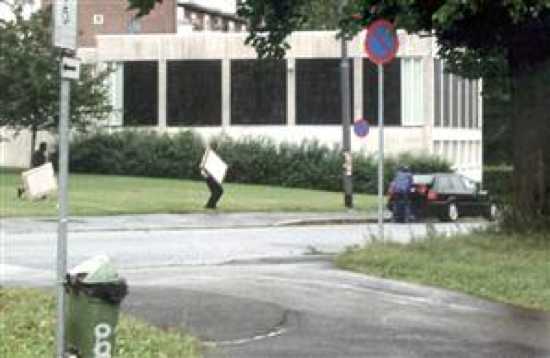
The famous painting, “The Scream,” exists in four different versions all painted by Edvard Munch. The masterpiece is said to depict a panic attack, which is somewhat ironic considering its habit of being stolen in high profile heists. In 1994 a gang of thieves climbed a ladder to the National Gallery second floor, where “The Scream” was hanging by a window. Apparently the painting had been moved to a less secure location as part of the festivities of the 1994 Lillehammer Winter Olympics. However when thieves attempted to ransom the painting back to the museum, police set up a successful sting operation which saw the masterpiece returned undamaged.
In 2004 a different group of men succeeded in stealing a different version of “The Scream” from the Munch Museum, albeit with a more bold method than the first attempt in 1994. They burst into the museum wearing masks and brandishing pistols, and grabbed the masterpiece, along with another Munch artwork, “The Madonna,” before making their escape. Moments before the thieves left the scene, a bystander took a grainy photograph of them packing the two paintings into a car (shown above). For two years police had no leads and rumors circulated that the paintings had been burned to destroy evidence. Finally in 2006 the paintings were recovered with minuscule damage which proved repairable. Six men were charged and convicted in connection with the robbery, and the Munch Museum underwent a massive security overhaul to prevent future robberies.
Bizarre Factor: During the 1994 burglary of the National Gallery, the thieves left a note which read: “Thanks for such poor security.”
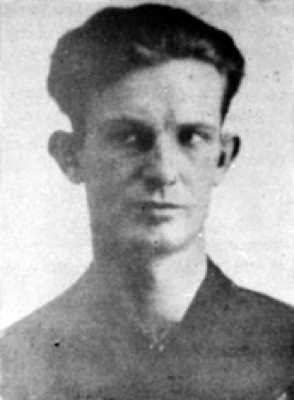
During the great depression Marshall Ratliff (pictured above) was active as a prolific bank robber living in Texas. After being paroled from a long sentence, he found himself jobless and in desperate need of cash. Although Ratliff wanted to rob a bank, his notoriety was such that if he showed his face in his hometown of Cisco, he would surely be recognized. He had to disguise himself, and so he and three other conspirators planned to dress him as Santa Claus. The robbery was scheduled by the group to take place on December 23rd, a time when wearing a Santa Claus costume would not be perceived as unusual behavior.
On the day of the robbery, Ratliff entertained groups of eager children on the way to the bank and patted them on the head as he walked past. Some children began to follow Ratliff, and even walked into the bank behind him. It was at that point when Ratliff’s three conspirators charged in, brandishing pistols and ordering staff onto the floor. The robbers then forced the manager to open a safe and the main vault, before cramming over $150,000 in cash and securities, into Santa’s sack. However the gang didn’t count on a fanatical woman and her six year-old daughter who were inside the bank at the time of the robbery. The mother burst out of the door screaming uncontrollably despite orders to stay on the floor and remain silent. This alerted the police to the robbery, and they surrounded the bank with guns prompting a subsequent shootout. After taking two young girls hostage, the four bandits made their getaway in a stolen car, but not before shooting two police officers dead at the scene. One of the bank robbers was also fatally wounded in the shootout, and he died in the getaway car.
The subsequent manhunt was the largest ever seen in Texas at the time. Eventually the trio were ambushed and captured by police in another shootout, in which all three robbers were shot down. Despite their wounds, the three men survived and were able to stand trial. This included Ratliff who had suffered no less than six gunshots wounds. One of the robbers was executed while another was sentenced to life imprisonment. Ratliffe was given the death sentence, but attempted to appeal and filed for a lunacy hearing. When the angry citizens of Eastland County heard this, they stormed the prison where Ratliff was held and lynched him by hanging him between two telephone poles. His last words were a plea for forgiveness and mercy.
Bizarre Factor: In 2009 another bank was robbed by a man dressed as Santa Claus, in an apparent copycat crime. During the robbery the man told bystanders he needed money to pay his elves.
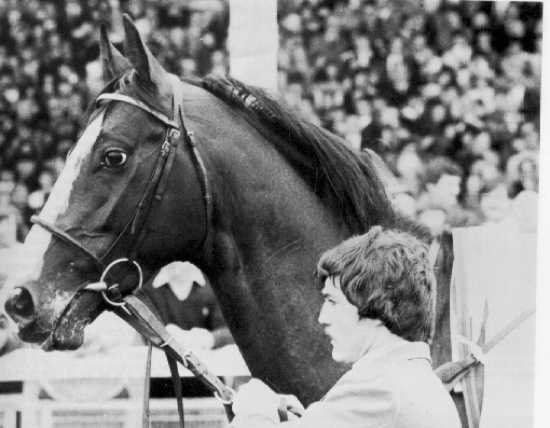
The mystery of Shergar is one that has attracted international fame in the media over the years. For those who don’t know, Shergar was an acclaimed Irish racehorse who enjoyed massive success, before being stolen from the Ballymany Stud in Ireland. The famous incident sparked massive media attention, and several TV documentaries have been produced on the horse’s disappearance. Shergar was never found, and police could only hypothesize on his whereabouts immediately following the robbery.
On a foggy evening of 1983, a mysterious car towing a horse-box arrived at the stud where Shergar was kept. When the son of the horse’s groom, James Fitzgerald, answered his door a few minutes later, he was immediately bludgeoned over the head with a blunt object and knocked unconscious. A gang of at least six masked men then stormed into the house and gathered the other family members by threatening them with pistols and submachine guns. According to the witnesses, Fitzgerald and his family, the robbers used code names to refer to each other and appeared extremely regimented. Before long Fitzgerald was forced outside and taken to the stud building where Shergar was being held. The robbers forced him to identify the famous horse, and then to help them load Shergar aboard a double horse-box. This was the last anyone laid eyes on the horse, except the thieves themselves of course.
In the aftermath of the robbery police resorted to unconventional means to track down the horse, having no sufficient leads to investigate. The culprits had planned their robbery exceptionally well, and had left no evidence other than a witness account from James Fitzgerald, and his family. Police even attempted to use clairvoyants to track down Shergar, to no avail.
Meanwhile the thieves were secretly communicating to the horse’s multiple owners, negotiating a ransom. This was never paid because the owners wanted to deter future thefts, and the thieves eventually gave up. Sadly, it is now generally believed the horse was slaughtered by the perpetrators to destroy evidence. The perpetrators of the crime were never brought to justice.
Bizarre Factor: According to a convicted criminal and member of the IRA, Shergar was stolen by an IRA special operations team, and machine- gunned to death when the gang assumed they were never getting a ransom. However this story is questionable.








